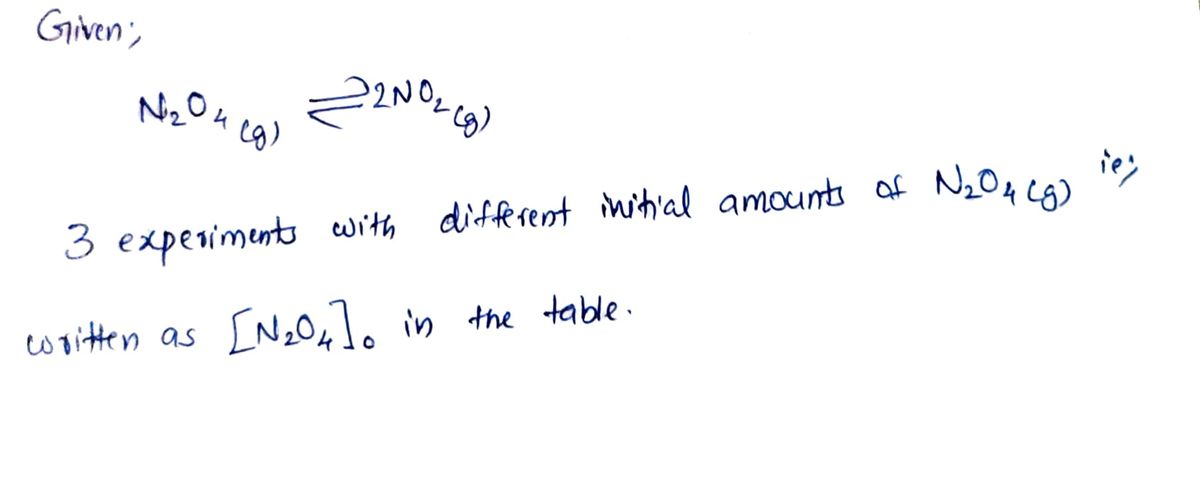Be sure to round to the correct number of significant figures. Exp [N2O4]0 [NO2] [N2O4] [NO2] / [N2O4] 2 [NO2] / [N2O4] [NO2]2 / [N2O4] 1 3.5 2.85 2.1 2 3.0 2.56 1.7 3 2.4 2.24 1.3 Based on your calculations, indicate whether each statement is True (T) or False (F): 1. Each experiment started with a different initial concentration of N2O4. 2. The ratio ([NO2] / [N2O4]) is equal to a constant value. 3. The ratio (2 [NO2] / [N2O4]) is equal to a constant value. 4. The ratio ([NO2]2 / [N2O4]) is equal to a constant value. 5. Each experiment reached a different set of equilibrium concentrations.
Dinitrogen tetraoxide is a colorless gas at room temperature. It can dissociate into nitrogen dioxide, which is a reddish brown gas.
| N2O4(g) 2 NO2(g) |
Three experiments were run starting with different initial amounts of N2O4(g) ([N2O4]0 in the table). The systems were allowed to reach equilibrium and the concentrations for each gas were measured (in units of moles/liter).
For each of the boxes below, calculate the ratios indicated by the column heading. This will show the mathematical relationship that exists between the concentrations of NO2 and N2O4 at equilibrium.
Be sure to round to the correct number of significant figures.
| Exp | [N2O4]0 | [NO2] | [N2O4] | [NO2] / [N2O4] | 2 [NO2] / [N2O4] | [NO2]2 / [N2O4] | ||||
| 1 | 3.5 | 2.85 | 2.1 | |||||||
| 2 | 3.0 | 2.56 | 1.7 | |||||||
| 3 | 2.4 | 2.24 | 1.3 |
Based on your calculations, indicate whether each statement is True (T) or False (F):
1. Each experiment started with a different initial concentration of N2O4.
2. The ratio ([NO2] / [N2O4]) is equal to a constant value.
3. The ratio (2 [NO2] / [N2O4]) is equal to a constant value.
4. The ratio ([NO2]2 / [N2O4]) is equal to a constant value.
5. Each experiment reached a different set of equilibrium concentrations.

Trending now
This is a popular solution!
Step by step
Solved in 2 steps with 2 images









